7 ways to economically heat your home with electricity
It is realistic to provide a cheap and efficient heating system. The electric convector is built on the principle of natural air circulation. From the heater, warm air moves upwards, thus stimulating the movement of air inside the room, and ensuring uniform heating. However, the convector is effective only in a warm climate, when the temperature does not fall below 10-15 degrees.
pros
- No forced air blowing. Even in the cleanest home, there are solid particles that lie on surfaces. By artificially blowing warm air out of a heater, this dust becomes part of the air we breathe. Natural air circulation is not so active, therefore, dust does not rise into the air.
- Small size with sufficient power. The heating elements of convectors heat up quickly, converting electricity into heat with an efficiency of up to 80%. In addition, there is a system of operation in different modes, as well as thermostats that allow you to work not constantly, but only when the air temperature drops.
- Mobility that allows you to move the convector around the room, to places with maximum cold supply.
- The possibility of creating a heating system exclusively with the help of convectors or using them as an integral part of a more complex heating system.
- The electric heating element does not heat up more than 100 degrees, and the body - 60 degrees. They have an increased level of protection against moisture, which allows the use of the convector in the kitchen and bathrooms.
Minuses
- The disadvantages of electric convectors is the installation of heaters in every room of the house.
- In addition, if you turn them on at the same time, then there is a possibility of exceeding the limits of permissible power.
However, the minuses can be turned into pluses by installing a relay for turning on the heaters in turn. The relay will allow you to create a stable temperature in the house, reduce energy costs and stay within the allowable power. There is one more argument in favor of a system of convectors - they will not fail all at once. Replacing one or two appliances without losing heat is not difficult.
In the photo there is an electric convector from Nobo, Norway
Method 2 - tubular electric heaters
Heat is transferred from a tubular electric heater to a liquid-based heat carrier. Usually, water and oil are used as a coolant, sometimes antifreeze. The principle of the device of heaters is the same as that of electric kettles, therefore they are also called heaters and oil radiators. In fact, this is a boiler placed in a vessel with water. The efficiency of such devices is quite high, and heat loss for heating is minimal.
pros
- The undoubted advantages of tubular heaters include their safety, reliability of operation and versatility of use.
- They can be used in both gaseous and liquid media.
- Not explosive, and not afraid of vibrations and shocks.
- Tubular heaters are available in a variety of design solutions, which allows you to economically heat a private house with electricity without violating the aesthetics of the interior.
Minuses
Heating elements have a high cost due to the expensive metals that are used in production. Since scale forms on the tubes, it is necessary.
A tubular radiator is a thin-walled metal tube with a spiral inside, so if you do not need particularly high temperatures, then you need to take a heater with carbon steel tubes. If the device must produce a consistently high temperature or work in an aggressive environment, then you need to take a device made of stainless steel.
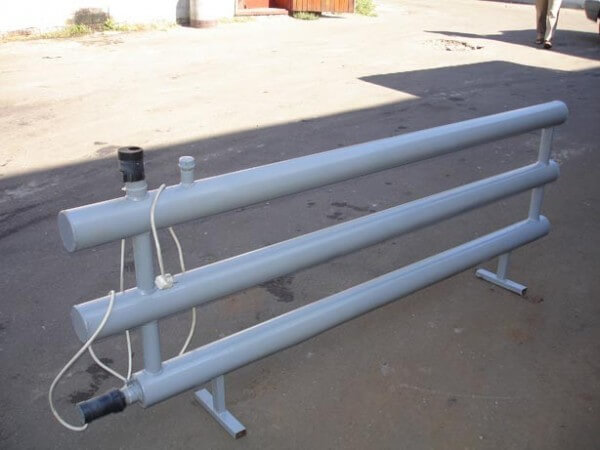
Pictured is a do-it-yourself tubular electric heater
Method 3 - warm floor
As the only source of heating, they are chosen to free up usable area, i.e. arrange heating without the use of radiators. In addition, the uniform distribution of heat in the room helps to reduce dust in the air. I recommend buying electric floors in the form of heating mats - this will greatly simplify installation.
Method 4 - electric boiler with heating element
Popularity is determined by their safety, low cost and reliability. Most consumers stop at heating element boilers - they are much cheaper than electrode and induction boilers, and they are easy to maintain.
However, due to the use of a thermoelectric heater (TEN), such heating cannot be called the most economical. In addition, before buying, I recommend clarifying the operating mode of local power networks - perhaps the networks will not be able to cope with the load you need and the purchase will be in vain.
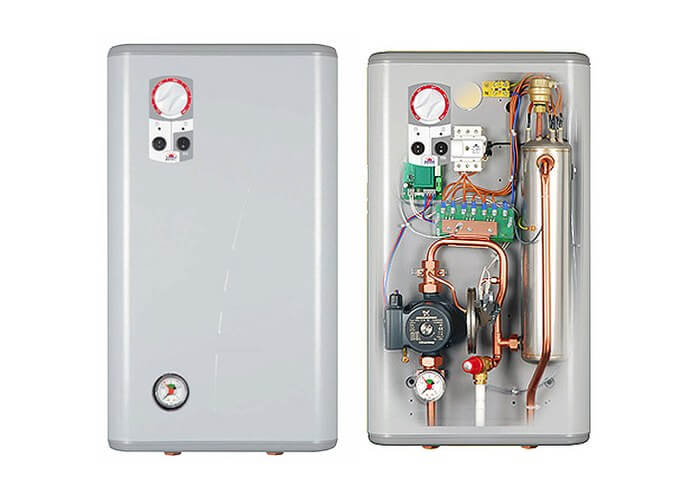
Pictured is an electric boiler KOSPEL, Poland
Method 5 - induction boiler
This is a transformer with two types of winding. The resulting eddy currents follow a short-circuited coil, which is the boiler body. In this case, the secondary winding receives energy, which is converted into heat, which heats the coolant.
Induction boilers quickly heat up the house, can operate at low voltage and do not contain parts that fail. The efficiency of such a boiler is almost 100% and does not depend on the period of operation.
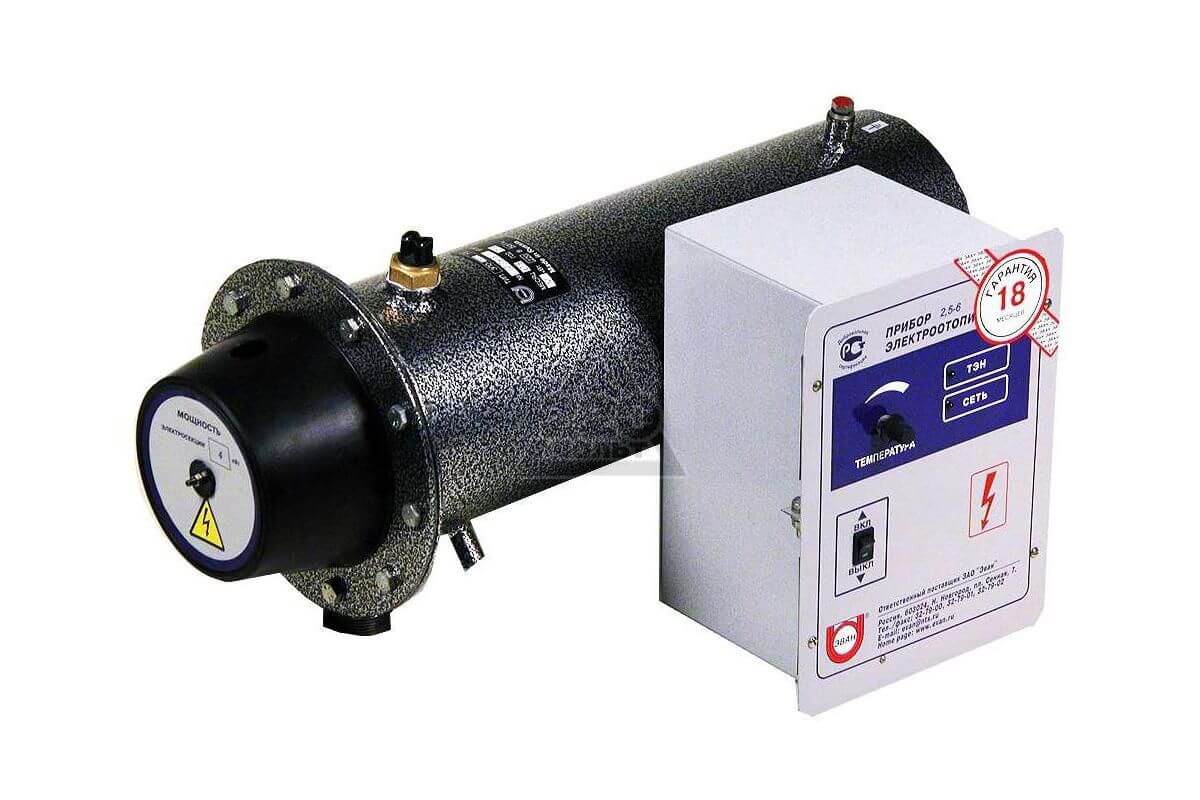
The photo shows an induction boiler EPO Evan for 9.5 kW, Russia
Method 6 - electrode boiler
Inside there are electrodes, which act as a heating element. When current passes through a liquid, heat is released. This means that in electrode boilers there is no actual heating element on which scale could form. The absence of scale will greatly facilitate operation.
Electrode boilers are highly reliable and operate much longer than tubular heaters. In addition, they are small in size, which is very convenient for a small residential building. The disadvantages include high requirements for the liquid used as a coolant. Water must be subjected to special treatment. Often, antifreeze should generally be exclusive - from the device developer.
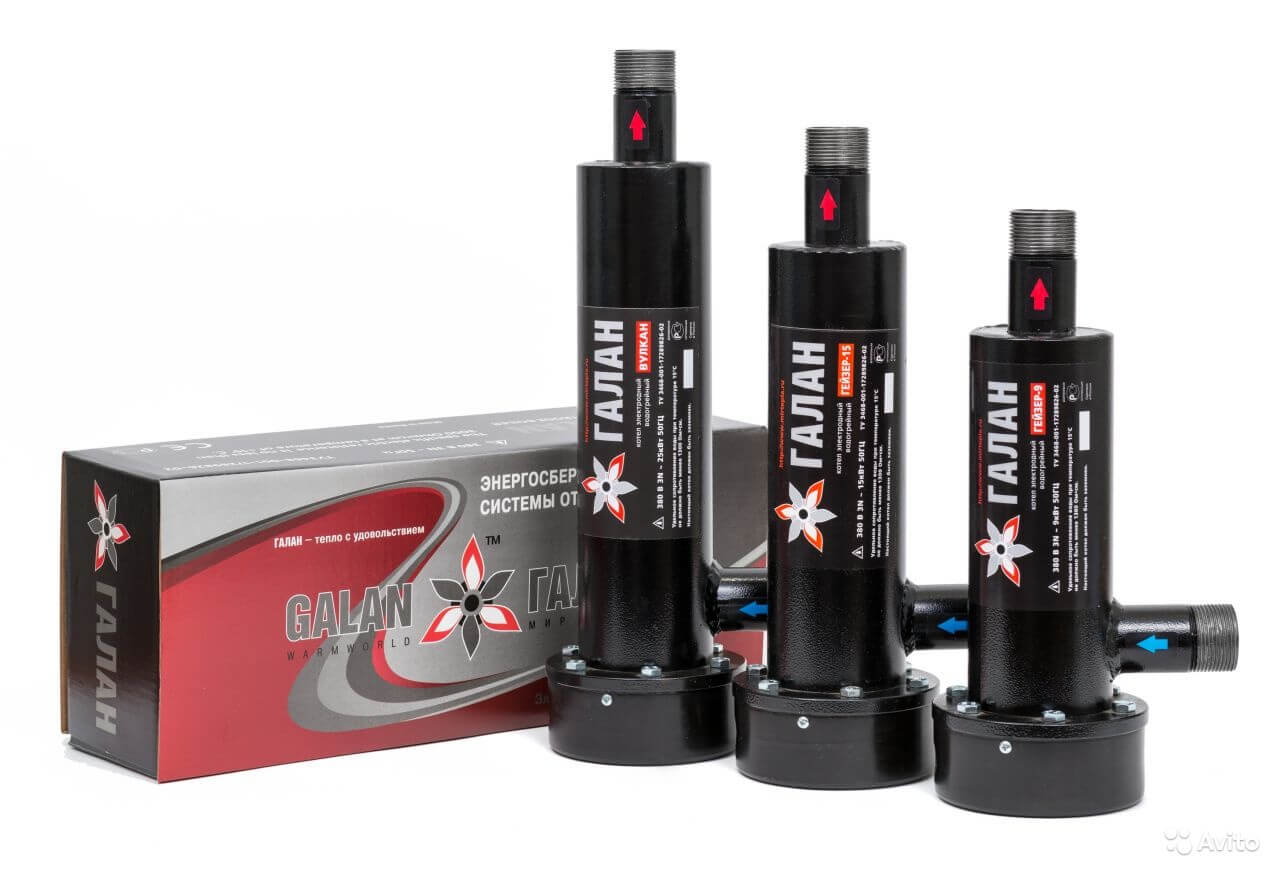
In the photo, the Galan electrode boiler, Russia
Method 7 - infrared heaters (most economical)
Infrared heaters are considered the most economical of all types of electric heaters. They do not need heating elements and pipes with water. Infrared heaters heat objects, not the room. Then the air is heated from the heated objects. If an electric boiler can be compared with a kettle, then an infrared one can be compared with a microwave.
Infrared panels are especially popular. They are installed on the ceiling or on the walls of residential and industrial premises. Since the heating area is increased, the room becomes warm faster than usual. You can use such a panel as an independent source of heating or as an addition to an existing system. The infrared heater is well combined with electrode boilers. For example, an infrared heater can only be turned on in spring and autumn, when it is too early to turn on the main heating, or when it suddenly gets cold outside.
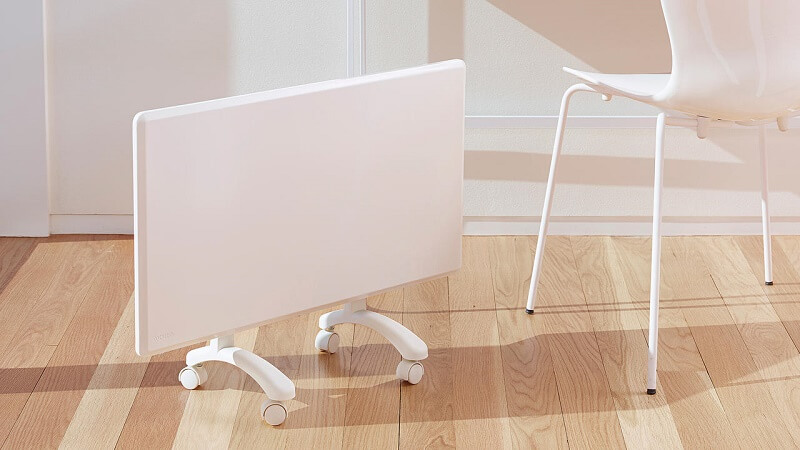
Pictured is a GROHE infrared panel, Germany
conclusions
- It is generally accepted that heating a house with electricity is not a cheap pleasure. This, of course, is true, if we mean only payment by tariffs. However, the cost of equipment, as well as the cost of its maintenance and repair, must be added to the price of heating.
- If we compare bills for electricity, firewood, coal, pipes, boilers and other equipment, we can conclude that private electricity heating is cheaper than stoves and other systems alternative to gas heating.
- In addition to money, there is another argument in favor of electric heating - it is time saving: turn it on, leave it and forget it. The only downside is a sudden power outage.
Watch the video below on how you managed to make cheap heating with electricity of a large private house.
